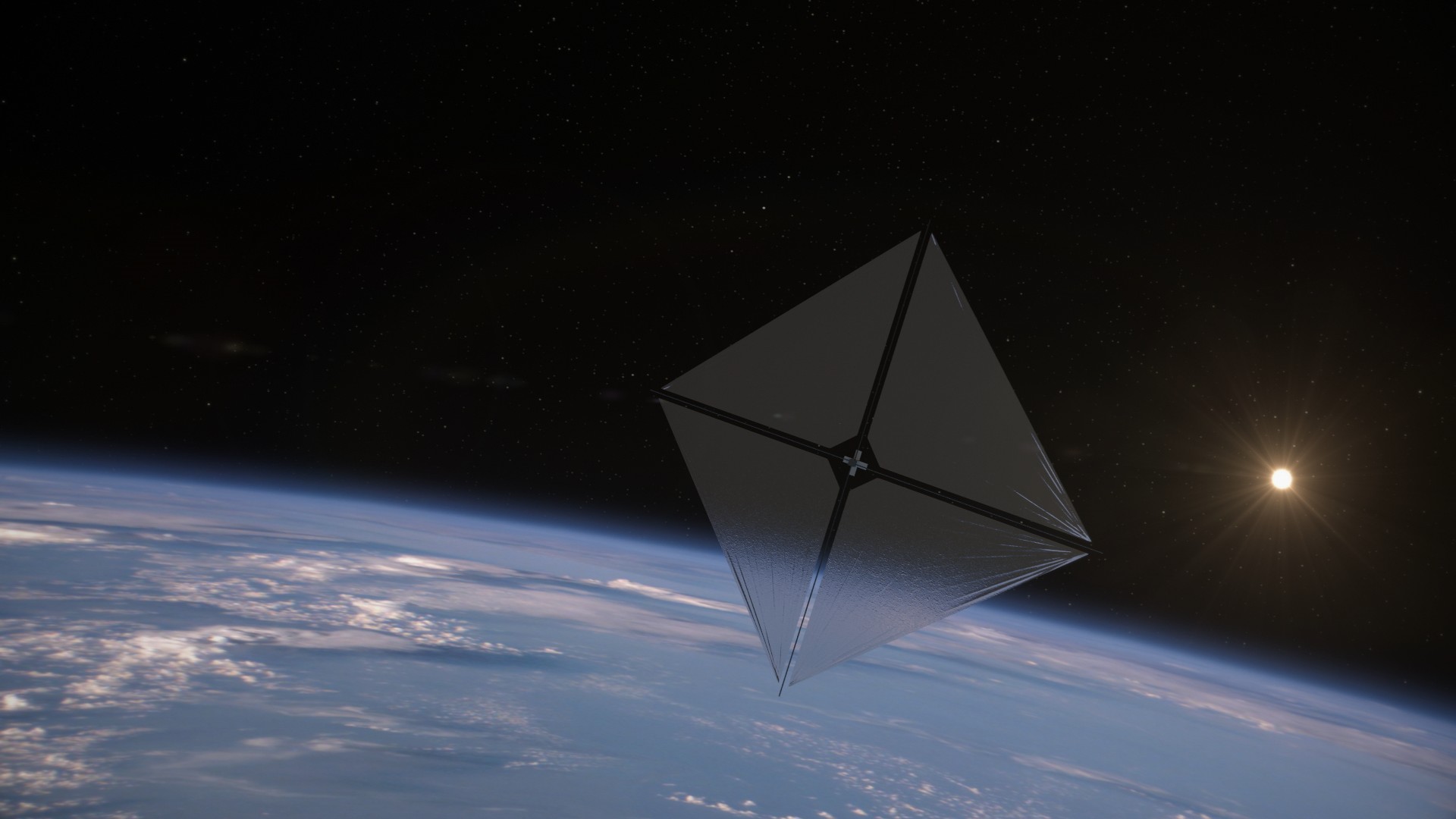NASA spacecraft captures 1st photo of its giant solar sail while tumbling in space

On April 23, NASA launched a solar sail protype to orbit around our planet — a piece of technology that could very well revolutionize the way we think about spacecraft propulsion. Then, on Aug. 29, the agency confirmed this sail successfully unfurled itself in outer space. Yet, we still didn't have official photographic evidence of this for some time.
Now, as of Sept. 5, we indeed do. NASA has released the first image of the open solar sail, formally called the Advanced Composite Solar Sail System, and stated that the spacecraft from which the sail was released will continue to send back more footage and data as time goes on.
The image itself may seem a little confusing to make heads or tails of, and that's due in part to the fact that the spacecraft has been slowly tumbling in space. The tumble is happening because, as NASA explains in a statement, the spacecraft didn't undergo any attitude control post-deployment. This behavior is therefore expected, the team says. Operators will implement attitude control and stabilize the spacecraft after collecting enough data to paint a picture of how the sail and the composite booms holding it together are doing. Hopefully, we'll get some easier-to-decode images after stability is achieved. But, in the meantime, let's talk about what we can actually see in this image.
As NASA says in the statement, it's important to first remember there are four wide-angle cameras in the center of the spacecraft anchoring the sail.
Near the bottom of the image, one camera view shows the "reflective sail quadrants supported by composite booms" while at the top of the photo, we can see the back surface of one of the craft's solar panels. Most spacecraft are lined with solar panels because that's how they power themselves up: with sunlight.
"The five sets of markings on the booms close to the spacecraft are reference markers to indicate full extension of the sail," the statement says. "The booms are mounted at right angles, and the solar panel is rectangular, but appear distorted because of the wide-angle camera field of view."
Related: NASA's solar sail spacecraft is visible in the night sky. Here's how to see it
Breaking space news, the latest updates on rocket launches, skywatching events and more!
The success so far of this mission is pretty awesome because solar sail technology is an incredibly impressive concept both in practice and in theory. Basically, it takes advantage of how photons, which are light particles, have the ability to impart pressure on an object despite being massless.
A solar sail looks like a flat sheet of material (not unlike a normal sail) and it can get quite large. In the case of NASA's Advanced Composite Solar Sail System, the sail is pretty much a square half the size of a tennis court at approximately 860 square feet (80 square meters). Most importantly, these sails can hypothetically be attached to spacecraft of any sort while sunlight particles beat down on their material.
Thus, like a sailboat on Earth is a vehicle propelled by the pressure of wind hitting its sail, a solar-sail-craft in space is one propelled by the pressure of sunlight hitting its sail. Not only would this mean a solar-sailing spacecraft can cut down on fuel necessities, but, theoretically, it should be able to reach very high speeds because it can attain fuel-less acceleration on an indefinite timescale.
However, the story can't reach such an epic finale without chapter one — and that's sort of where we are. Well, maybe chapter two or three because this new solar sail system isn't the first to be launched. The Japanese spacecraft Ikaros is responsible for the first successful solar sail deployment in 2010, and there have been a handful of other solar-sailing adventure attempts since then.
Still, the Advanced Composite Solar Sail System will make its mark in propulsion history. The next step for the team (after stabilizing the spacecraft and analyzing its flight dynamics) is to begin maneuvering the spacecraft in orbit. Meanwhile, you can try spotting the sail for yourself, in a fun turn of events. Ironically, the spacecraft's unstable trajectory right now makes it nice and shiny for anyone hoping to catch a glimpse it zooming across the night sky.

Monisha Ravisetti is Space.com's Astronomy Editor. She covers black holes, star explosions, gravitational waves, exoplanet discoveries and other enigmas hidden across the fabric of space and time. Previously, she was a science writer at CNET, and before that, reported for The Academic Times. Prior to becoming a writer, she was an immunology researcher at Weill Cornell Medical Center in New York. She graduated from New York University in 2018 with a B.A. in philosophy, physics and chemistry. She spends too much time playing online chess. Her favorite planet is Earth.

